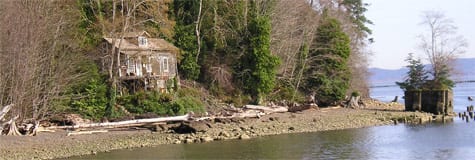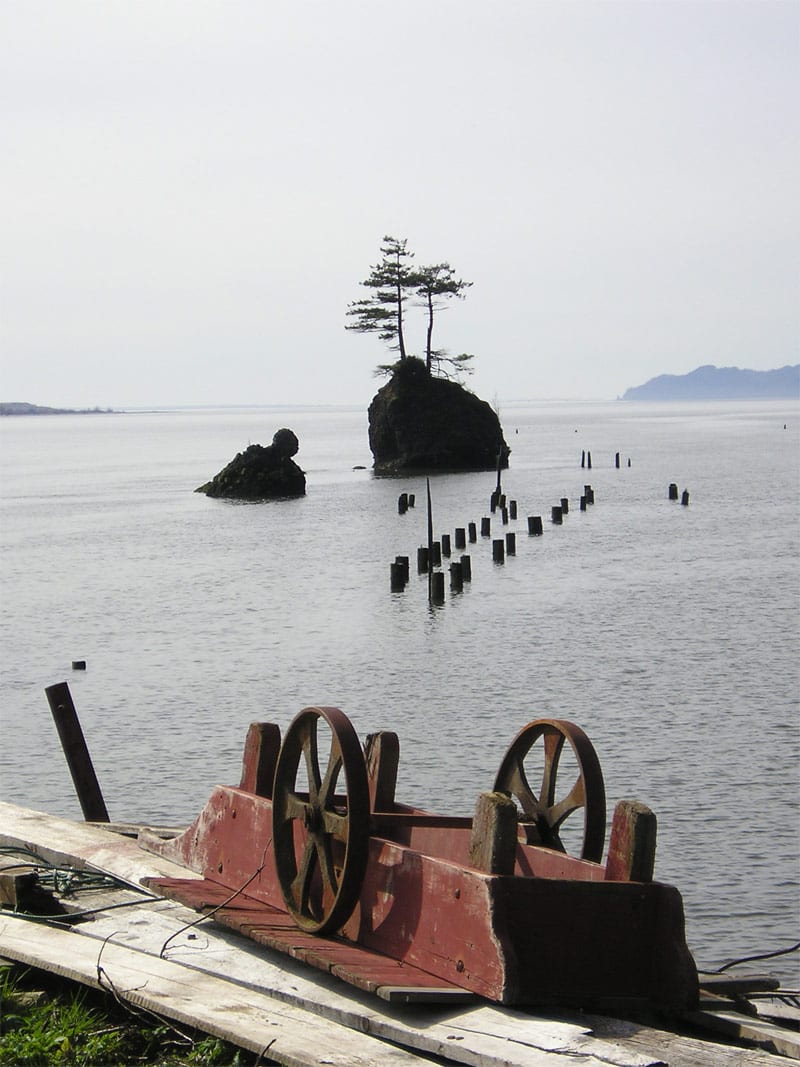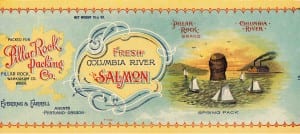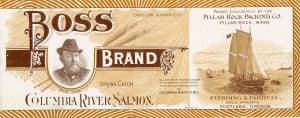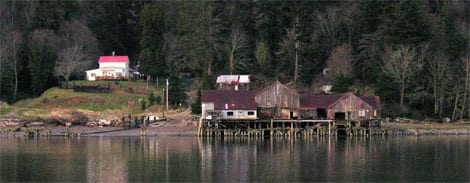Altoona,
Washington
The Altoona site was used in the 1830s by the Hudson’s Bay Company as a fish receiving station and saltery. The canning industry eventually dwindled but you can still see some remains of old cannery buildings. Four miles past Altoona you will come to Pillar Rock where Lewis and Clark camped and where they first remarked on seeing the Pacific Ocean.
Pillar Rock
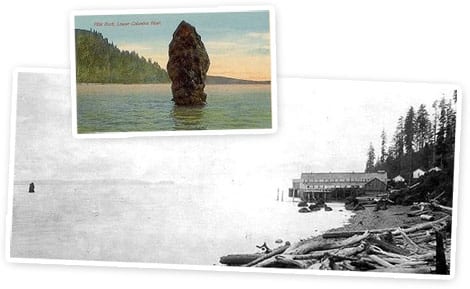 Pillar Rock is located on the Washington side of the Columbia River at River Mile (RM) 27, just off of Jim Crow Point. Three miles downstream was located the old fishing cannery at Altoona, with Harrington Point, the eastern end of Grays Bay to the west. At one time Pillar Rock stood 75 to 100 feet above the water (depending on the tide) before being flattened for installation of a navigation marker (Marker 17) and a light. Today Pillar Rock stands about 25 feet above the Columbia River surface. According to a Wahkiakum myth, the rock was named “Taluaptea”, after a chief who displeased the spirits and was turned to stone.
Pillar Rock is located on the Washington side of the Columbia River at River Mile (RM) 27, just off of Jim Crow Point. Three miles downstream was located the old fishing cannery at Altoona, with Harrington Point, the eastern end of Grays Bay to the west. At one time Pillar Rock stood 75 to 100 feet above the water (depending on the tide) before being flattened for installation of a navigation marker (Marker 17) and a light. Today Pillar Rock stands about 25 feet above the Columbia River surface. According to a Wahkiakum myth, the rock was named “Taluaptea”, after a chief who displeased the spirits and was turned to stone.
Lewis and Clark camped twice near Pillar Rock, once on November 7, 1805, when the men thought they had reached at the Pacific.
… Great joy in camp we are in View of the Ocian, this great Pacific Octean which we been So long anxious to See. and the roreing or noise made by the waves brakeing on the rockey Shores (as I Suppose) may be heard distictly …”
[Clark, November 7, 1805]
Lewis and Clark camped again at Pillar Rock on November 25, 1805, as they backtracked along the Washington shore to get to a narrow section of the Columbia where they could cross the river. They were headed to their winter camp at Fort Clatsop.
In Irene Martin’s book, “Beach of Heaven,” she writes:
It wasn’t until 1844 that Captain John Couch of Portland established a trading post in the area known as Bayview, near Skamokawa. In the 1830’s a Hudson’s Bay salting station existed at Pillar Rock during salmon season, operated by the Hudson’s Bay post at Fort George, now known as Astoria.”

Pillar Rock Cannery
The Pillar Rock Cannery packed salmon from 1877 to 1947. With the decline of the salmon industry the cannery switched to crab and other fish.
Continued overfishing, deteriorating habitat, and eventually dam construction contributed to further declines in numbers of salmon and the virtual disappearance of the prime spring and summer chinook that were the source of the premium product for which Wahkiakum County canneries were known. In 1947, just 81 years after the Humes’ first cannery opened, the last salmon were canned in Wahkiakum County as the Altoona and Pillar Rock canneries closed. (The Pillar Rock brand survived the cannery; in 2006 canned wild Alaska salmon is still sold under that label in parts of the country.)
The two labels you see here are from the Pillar Rock Packing Company. Located along the rugged Washington shoreline, the firm borrowed its name from the bastion of basalt rising some 25-feet above the river’s surface about 1000-feet off the cannery. The site, 22-miles upstream from the river’s mouth, had been used by the venerable Hudson Bay Company as a salmon saltery-one of its many far-flung export enterprises-and before that as a Native American encampment. In 1877, a salmon cannery took shape there.
Altoona, WA
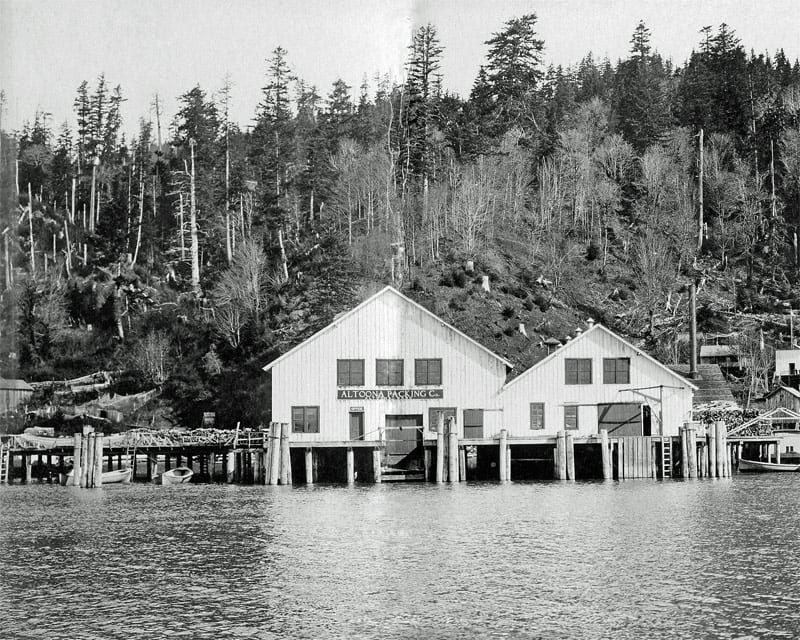
Altoona Cannery
